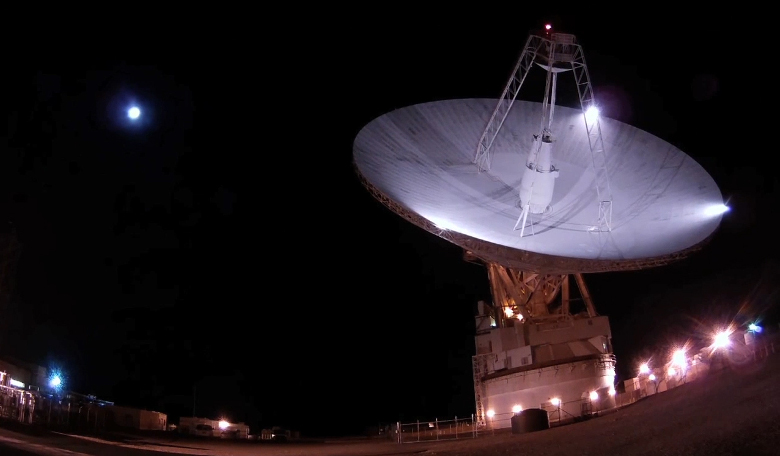With a resurge of interest in flying to the Moon and establishing a settlement on the lunar surface gaining momentum, ensuring a safe passage around the Moon is of paramount importance for any future mission. However searching for derelict spacecraft and space debris in a lunar orbit, at least with optical telescopes, is challenging due to its bright glare. Now, a new technological application is set to change that as scientists have used an interplanetary radar to successfully spot both NASA's Lunar Reconnaissance Orbiter [LRO] and the “lost” Indian Space Research Organisation's Chandrayaan-1 spacecraft.
Pioneered by scientists at NASA's Jet Propulsion Laboratory in Pasadena, California, the technique involves sending a powerful beam of microwaves directed toward the Moon from DSS-14, a 70 metre antenna located at NASA's Goldstone Deep Space Communications Complex in California and receiving them back at the 100 meter Green Bank Telescope in West Virginia after the radar echo has bounced off the Moon. DSS-14 is also known as the "Mars Antenna" as it was the first antenna to receive signals from Mariner 4 – the first spacecraft to closely observe Mars – on 18th March, 1966.
Although the technique has been used before to observe small asteroids several million miles from Earth, researchers were not certain that the radar could detect an object the size of Chandrayaan-1, a small cube spacecraft about 1.5 meters on each side – about half the size of a smart car – in orbit around the Moon. Luckily, for any would-be space tourists, the technique proved successful and Chandrayaan-1, whose whereabouts had been previously unknown for some time, has now been found.
The task was initially made complicated as the Moon is riddled with regions with higher-than-average gravitational pull – known as mascons – that can dramatically affect a spacecraft's orbit over time, even causing it to crash on the lunar surface. Nonetheless, the radar team utilised that as the spacecraft is in polar orbit around the moon, it would always cross above the lunar poles on each orbit. The dormant Chandrayaan-1 was predicted to complete one orbit around the moon every two hours and 8 minutes and when the signature of a small spacecraft crossed the beam, the team knew they had found what they were looking for.
"It turns out that we needed to shift the location of Chandrayaan-1 by about 180 degrees, or half a cycle from the old orbital estimates from 2009," said Ryan Park, the manager of JPL's Solar System Dynamics group, who delivered the new orbit back to the radar team. "But otherwise, Chandrayaan-1's orbit still had the shape and alignment that we expected."
Follow-up observations were also conducted with the Arecibo Observatory in Puerto Rico, which has the most powerful astronomical radar system on Earth, to help track the spacecraft. Coupled with the large radar antennas at Goldstone and Green Bank, by working together to rediscover Chandrayaan-1 and hunt down LRO, researchers have shown that it is possible to track and detect small spacecraft in lunar orbit that could otherwise pose a potential collisional hazard.











